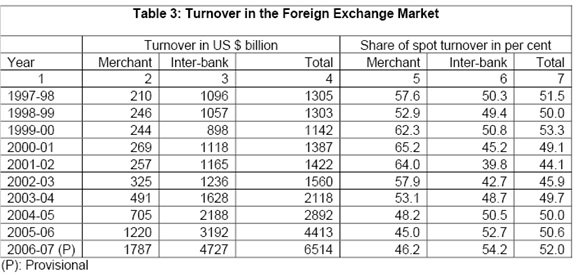We are all different- and bring a different set of skills, experiences and world-views to the workplace. Organizations across the globe are now recognizing the potential leverages as well as land mines such diversity can bring into the office. More so, because in the twenty-first century globalized world of today workplace diversity is more conspicuous than ever before. Lack of diversity best practices is therefore not an option any more.
India has a special place in the world for being one of the most diverse nations in the world- in terms of culture, religions, castes, values, languages and of course gender. It is only now that corporate India is also witnessing an influx of a more diverse pool of talent- women, members of the Scheduled castes and tribes, people from rural backgrounds, the generation Y and openly gay employees to mention a few, and they’re challenging the traditional upper caste urban male domination in our offices and board rooms. Increasing awareness of the issue in the media and community ensures that companies that do not create and implement sound diversity policies may have a tough time attracting and retaining the best people in these times of acute talent crunch.
So, is there really a business case for investing in diversity management teams? If so, what are the best practices that companies in India can follow? And how do we handle sensitive issues in the workplace?
Gender
International Business Report (IBR) of business consultancy organization Grant Thornton reveals that the proportion of Indian women occupying senior positions in businesses has catapulted from 9% in 2011 to 14% in 2012. More importantly, the number of woman chief executives has jumped from 1% in 2011 to 10% in 2012, when globally the number rose from 8% to only 9%. Some software companies in India have achieved up to 35% women as part of the workforce through effective diversity and inclusion practices.
The IBR survey also showed that 65% of Indian women have often given up on family obligations for the sake of career growth. Thus stereotypes about women are also gradually being shattered. Companies must realize that a greater proportion of women in the workplace bring with them their edge in soft skills and enhanced multiple perspectives. Parimal Chaudhari, director of Praj Industries, told Times of India in an interview that businesses will certainly benefit by having women in bigger numbers at important positions, as ‘feminisation’ of the workplace will bring advantages in terms of greater employee bonding and a stronger sense of social responsibility.
Caste
India has implemented the world’s largest ever affirmative action scheme in publicly owned organizations by reserving positions for members of the traditionally backward castes. Government suggestions to include such policies in the private sector has met with stiff resistance till now, but some companies like TCS are already showing the way by enhancing participation of the Scheduled castes and tribes through fine-tuned recruitment practices, training and development of SC/ST youth and community outreach activities. Yet, overall the employment of backward castes in corporate India remains marginal and companies have a huge hitherto ignored pool of talent waiting to be trained and utilized.
Age
With a median age of twenty-six India is one of the youngest nations in the world. But managers across organizations find the younger employees either difficult to handle, or their perceptions are clouded with biases and stereotypes. Generation Y (people born till 1995) have already entered the workforce and posing enormous challenges and untapped opportunities, and generation Z (born post 1995) are on their way. These young men and women are sophisticated, technology-savvy, urbane, fiercely independent and have a limited sense of loyalty towards employers. Companies that create conditions to let their creative juices flow will thrive, those that do not will bear the impact of a deviant workforce. Given their sheer numbers, Diversity managers in India desperately need to come up with more research material and best practices to understand their motivations, effectively tap into their talent and make them feel more included within the organization.
Infosys is one of the Indian companies with a strategic vision for younger employees. Students from reputed educational institutions are selected through an entrance test that encourages them to think out of the box. Top performers get an opportunity to work with experienced Infosys professionals on various projects. CTY is conducted in three phases: Selection – Hundreds of students from schools in and around cities appear for a written examination; Training – The shortlisted students undergo CTY training at Infosys’ Development Centers (DCs), Hands-on project – Students work on projects at DCs. However, while Infosys has become one of the biggest recruiters of young talent, they have failed to retain them to a desired extent with the company facing large scale attrition among its younger employee base.
Differently-abled
India has some 40 to 80 million people with disabilities. But many companies are realizing the productive potential of such people and are developing policies to make their workplaces more disability-friendly and implementing practices that take care of their special needs.
Wipro’s Equal Opportunity Employment Policy and Policy Prohibiting Discrimination and Harassment states that it hires employees without discriminating on the basis of physical abilities. It is Wipro’s vision to develop an atmosphere that is respectful of every individual, including those with disabilities. In 2009, Wipro developed a Diversity Framework to support its employees coming from diverse backgrounds. The programme was designed in collaboration with one of India’s leading disability consultancy firms, which carried out an audit of Wipro’s activities in the areas that specifically related to disability. The audit helped Wipro develop a sustainable framework and strategy to promote equal opportunity for people with disabilities and identified areas that required attention to create a more inclusive environment.
LGBTs
Since the Delhi High Court read down Section 377 of the Indian Penal Code- effectively decriminalizing homosexuality, India has witnessed an unprecedented ‘coming out’ of its gay and lesbian population. By conservative estimates, anywhere between 2 to 5 percent of our population is LGBT (lesbian, gay, bisexual or transgender). This fact itself highlights the importance of making our workplaces more welcoming of LGBT employees. A survey earlier this year by the Indian LGBT think-tank Mingle revealed that a third of LGBT respondents faced harassment at the workplace, and 80% reported hearing homophobic comments in their offices. Also, half the respondents believe that their being closeted or facing harassment has an impact on workplace productivity. The survey also shows that openly gay employees- as compared to their closeted counterparts- have greater trust in their employers, are more likely to have entrepreneurial aims in the future, have greater satisfaction with their rate of promotion, feel more loyal to their organization and are more likely to continue with the same company for a greater period of time. Also, 90% of respondents say that an organization’s LGBT related policies are a factor they have in mind before joining the company.
IBM, Google, McKinsey, Cisco, Bain & Company and Microsoft are some of the organizations that have initiated inclusion policies for employees of alternative sexual orientations and gender identities. Now it’s time for Indian organizations also to take the first step in promoting a more inclusive workplace for current and potential LGBT employees.
From diversity to inclusion
Organizations across India are fast realizing the importance of promoting a culture of innovation and growth. But they must also understand that businesses are only as strong as the teams that drive that growth. It means that the respective Diversity teams of various companies make sure that words like ‘inclusivity’ are not mere managerial jargon, but start making sense to the visible and invisible minorities in the workplace. It means to enable employee resource groups to function in a way that they act as a succor for distressed employees, as well as a way for the senior management to reach out to its marginalized workforce, and that corporate sponsorship is given to these groups so that a general perception of the company being diversity-friendly is given out to both its employees and people outside.
In today’s post-recession competitive environment where corporate behemoths are struggling against niche vendors, and companies are fighting a tough battle against growing attrition rates, a perception of not being diversity friendly can mean losing out on the big Dollars and Euros, as well as a failure to attract and retain the best talent.
References:
1. Women make strides in workplace equality – Times Of India, 8 Mar 2012
2. Affirmative Action (Positive Discrimination), Paper by Verma V. K., Assistant General Manager (HR)- Tata Consultancy Services, New Delhi
3. Catch Them Young – Making summer vacations unforgettable for schoolchildren in India, Infosys website
4. Wipro Sustainability Report 2008‐09, http://www.wipro.com/corporate/investors/pdf‐files/wipro‐sustainability‐report‐2008‐09.pdf
5. Mission for Indian Gay & Lesbian Empowerment website http://mingle.org.in/general/mingles-lgbt-workplace-survey-report-2012-is-released/
































